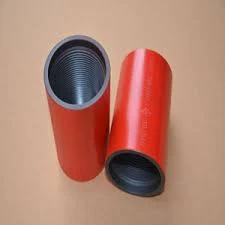- Afrikaans
- Albanian
- Amharic
- Arabic
- Armenian
- Azerbaijani
- Basque
- Belarusian
- Bengali
- Bosnian
- Bulgarian
- Catalan
- Cebuano
- Corsican
- Croatian
- Czech
- Danish
- Dutch
- English
- Esperanto
- Estonian
- Finnish
- French
- Frisian
- Galician
- Georgian
- German
- Greek
- Gujarati
- Haitian Creole
- hausa
- hawaiian
- Hebrew
- Hindi
- Miao
- Hungarian
- Icelandic
- igbo
- Indonesian
- irish
- Italian
- Japanese
- Javanese
- Kannada
- kazakh
- Khmer
- Rwandese
- Korean
- Kurdish
- Kyrgyz
- Lao
- Latin
- Latvian
- Lithuanian
- Luxembourgish
- Macedonian
- Malgashi
- Malay
- Malayalam
- Maltese
- Maori
- Marathi
- Mongolian
- Myanmar
- Nepali
- Norwegian
- Norwegian
- Occitan
- Pashto
- Persian
- Polish
- Portuguese
- Punjabi
- Romanian
- Russian
- Samoan
- Scottish Gaelic
- Serbian
- Sesotho
- Shona
- Sindhi
- Sinhala
- Slovak
- Slovenian
- Somali
- Spanish
- Sundanese
- Swahili
- Swedish
- Tagalog
- Tajik
- Tamil
- Tatar
- Telugu
- Thai
- Turkish
- Turkmen
- Ukrainian
- Urdu
- Uighur
- Uzbek
- Vietnamese
- Welsh
- Bantu
- Yiddish
- Yoruba
- Zulu
Understanding the Impact of Tubing Crossover in Oil and Gas Operations
Understanding Tubing Crossovers in Oil and Gas Operations
In the oil and gas industry, efficient extraction and transportation of hydrocarbons are paramount. One of the critical components in these processes is the tubing system. Tubing crossovers play a vital role in connecting various sections of tubing, ensuring the seamless flow of oil and gas from the reservoir to the surface. This article explores the significance, types, and applications of tubing crossovers in the oil and gas sector.
What is a Tubing Crossover?
A tubing crossover is a specialized fitting used to connect two sections of tubing at an angle or to change the direction of the flow of fluids. These components are essential in well operations, facilitating the effective transition between different sections, whether for production or injection purposes. They come in various configurations to accommodate different tubing sizes, pressures, and operational requirements.
Types of Tubing Crossovers
1. Standard Crossovers These are commonly used to connect two pipes of similar diameters. They are manufactured to handle typical pressures and flow rates found in oil and gas operations.
2. Reducing Crossovers These fittings are used when there is a need to connect pipes of different diameters. A reducing crossover allows operators to smoothly transition from a larger section of tubing to a smaller one, thereby maintaining flow efficiency while accommodating varying well designs.
3. Specialty Crossovers In some cases, custom-designed crossovers are necessary to meet specific operational challenges. These can include interfaces for various fluid types or conditions, pressure requirements, and temperature considerations.
Applications of Tubing Crossovers
tubing crossover

Tubing crossovers are utilized in various applications throughout the oil and gas industry
. They are especially prevalent in- Production Wells In production wells, tubing crossovers facilitate the flow of hydrocarbons from the reservoir to the surface. They ensure that the production tubing is correctly aligned and connected, which is crucial for optimal extraction rates.
- Injection Wells For enhanced oil recovery techniques, such as water injection or gas injection, tubing crossovers allow for the efficient transfer of injection fluids into the reservoir. This is necessary to maintain reservoir pressures and enhance hydrocarbon mobilization.
- Well Interventions During maintenance or repair operations, tubing crossovers are often necessary to reconfigure the tubing system. This adaptability ensures that operators can perform necessary interventions without significant downtime.
Importance of Quality and Engineering
The quality and engineering of tubing crossovers are paramount for ensuring the safety and efficacy of oil and gas operations. They must be manufactured to withstand the harsh environments often encountered in well operations, including high pressures and corrosive substances. As such, materials are often selected based on their ability to endure these challenges, including carbon steel, stainless steel, and specialized alloys.
Furthermore, proper installation is crucial. Incorrectly installed crossovers can lead to leaks or failures, resulting in operational hazards and economic losses. Therefore, meticulous attention to detail during the design, selection, and installation phases is essential for ensuring these components function effectively.
Conclusion
In conclusion, tubing crossovers are integral components of oil and gas extraction and transportation systems. Their ability to connect different sections of tubing and manage the flow of hydrocarbons plays a crucial role in optimizing production efficiency. With various types available to meet specific needs, understanding tubing crossovers' engineering and operational importance must remain a priority in the industry. As technology and materials continue to advance, the reliability and performance of tubing crossovers will likely enhance, contributing positively to future oil and gas operations.
-
Tubing Pup Joints: Essential Components for Oil and Gas OperationsNewsJul.10,2025
-
Pup Joints: Essential Components for Reliable Drilling OperationsNewsJul.10,2025
-
Pipe Couplings: Connecting Your World EfficientlyNewsJul.10,2025
-
Mastering Oilfield Operations with Quality Tubing and CasingNewsJul.10,2025
-
High-Quality Casing Couplings for Every NeedNewsJul.10,2025
-
Boost Your Drilling Efficiency with Premium Crossover Tools & Seating NipplesNewsJul.10,2025







